Taking a break from playing Hearthstone to do what I always do when I take a break from a videogame with which I’ve become obsessed – writing about it!
Hearthstone is an online collectible card game that’s just, as of this writing, about to celebrate its first anniversary. It can’t help but share many similarities with the most influential and arguably prototypical CCG, Magic: The Gathering, and it’s set in the World of Warcraft milieu, featuring characters and general flavour from that venerable and record-breaking Massively Multiplayer Online Role Playing Game (Hearthstone is subtitled Heroes of Warcraft and was created by Blizzard, the same company responsible for WoW).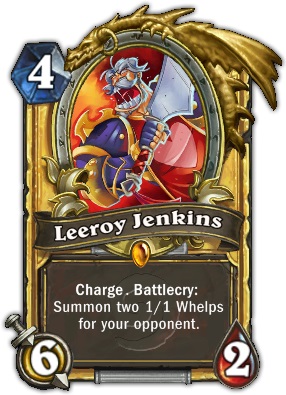
So you take history’s most popular CCG and skin it with history’s most popular MMORPG and why wouldn’t you have a smashing success? Hearthstone won Best Mobile Game, Best Multiplayer Game, and Game of the Year in 2014, and is also overwhelmingly well-regarded by actual players. But why would I get so into it? I haven’t really played Magic since high school and I’ve never played WoW. Hearthstone just isn’t the kind of game that I play. It’s certainly a well-constructed game, with good voice acting and often hilariously written flavour text; and of course it’s also definitely got that Skinner Box stuff going on that makes free-to-play-with-optional-microtransactios games so compelling and ethically complex (you can see my previous article on Plants vs Zombies 2 for my take on that, just for funsies), there’s also something else going on. Something that keeps drawing me back. Something…comforting.
The first clue is in the name. Hearthstone. Why Hearthstone?
When you start up the game, you’re greeted by a friendly voice – this is the dwarf innkeeper, Harth Stonebrew. Did he invent the game and name it after himself? Does he own all proprietary rights to it, and so it can only legally be played in his tavern? Are there lawyers in Azeroth?
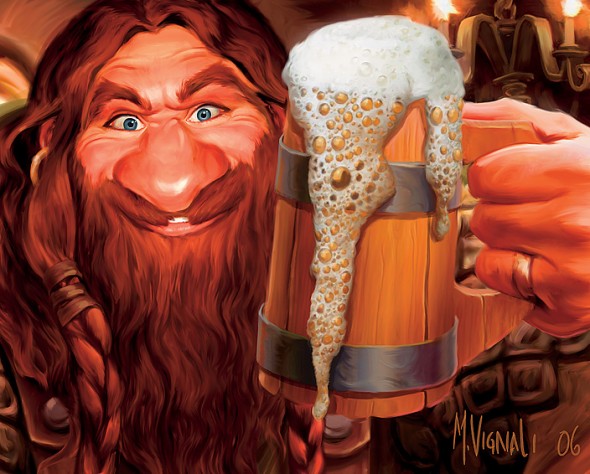
Thirsty?
Whatever the answers, that’s not all there is to it. One of the handful of randomized greetings you get upon entering is: “Pull up a chair by the hearth!” And indeed, the game’s interface is stylized as if you are sitting down at a table across from your opponent and playing a collectible card game. You see the game board as it opens and is set down atop a sturdy, wooden table with a tasteful blue tablecloth. From all around, you hear the murmurs of the tavern’s other patrons talking, drinking – as well as their cheers and jeers, their oohs and aahs, as your game progresses, when you do damage to your opponent or they to you, when you win or when you lose. You can almost feel the warmth of the hearthfire when you sit down to play. You want to come back to it not only because you’re addicted to the game but for the familiar ambience it provides.
Hearthstone is a very fun and well-designed game. But it isn’t just a game. Hearthstone is a place.
More specifically, it’s a Third Place.
The Third Place (or Third Space) is a sociological concept usually defined as a location that’s open to the public, and that functions as a social hub or meeting place. According to this classification, the “first place” is a person’s home; the “second place” is his or her work. The “third place,” then, is where a person goes that is neither home nor work, but something else – an environment that’s more social, relaxed, and free of official obligations, that fosters interaction and creativity. It’s where we hang out with our friends, basically. The bar in Cheers is a third place, as is Central Perk in Friends.
Third Place theory posits that third places have become vital in modern societies wherein the concept of “free time” exists across practically all socioeconomic classes; whereas landed gentry might have had the opportunity to while away the hours at the coffee house in centuries past, now practically everybody has an evening or weekend to chill at Starbucks for a bit at least every now and then. Not just that, but the idea that spending time in an environment that is neither home nor work is actually a social necessity is a relatively modern phenomenon.
Now, plenty of people have applied Third Place theory to online games and communities in general, and in the sense that Facebook, World of Warcraft, and Overthinking It are “spaces” that enable and encourage social interactions among friends and strangers that can be as meaningful or as vacuous as the participants want them to be, there’s a sense in which this is certainly true. In fact, the first time I ever heard about Third Place theory was a few years ago when I read an interview with William Gibson, the science fiction author who actually coined the term “cyberspace” back in the ‘80s to refer to a pseudolocation created by interlinking networks of computers. But the metaphor of the Internet as a “place” only goes so far with these examples.
Overthinking It, for instance, is more like reading a magazine with a letter column to which you can contribute than it is to going to a pub. Facebook more resembles some kind of scrolling bulletin board than it does a café. And World of Warcraft is a world, certainly, but that’s also the whole problem – it’s a game that’s a simulation of a world, of an entire planet, or at least a small continent, and it’s kind of both home and work at the same time, rather than something modelled after an environment where you’re supposed to spend leisure time.
Hearthstone, though, is not just a game – it’s a game that is designed to simulate the kind of place where you’d play a game. This distinguishes it even from casual type games like Farmville or even online Scrabble or chess, in that a vital part of the game’s design is the illusion that you’re in familiar, warm, and welcoming surroundings, sitting across a table from someone – maybe a stranger, maybe a friend – and having this competitive social interaction while other people semi-actively participate (by observing your game, or just by providing the conventional sounds attendant of a tavern. For that reason, it’s a lot more like a place than most of the other “places” that people congregate online. And this design decision works very much to the game’s advantage.
In his 1989 book, “The Great Good Place: Cafés, Coffee Shops, Bookstores, Bars, Hair Salons and Other Hangouts at the Heart of a Community,” sociologist Ray Oldenburg lays out eight criteria that made a place a Third Place. Let’s compare them to the design of Hearthstone and see how this hypothesis of mine shakes out:
The Third Place is neutral territory
When you go to the Third Place, you don’t have to cook or clean up, you don’t have to look after anybody else. Because it’s neither home nor work, you haven’t got any responsibilities there. Hearthstone is definitely like that. You’re there to play and have a good time, and that’s all.
It’s open and accessible
The Third Place has to be easy to get to, and must make its denizens feel that their needs are being met. Hearthstone certainly does this. Open it up on your computer or tablet and there you are – transported almost instantaneously and welcomed with arms wide.
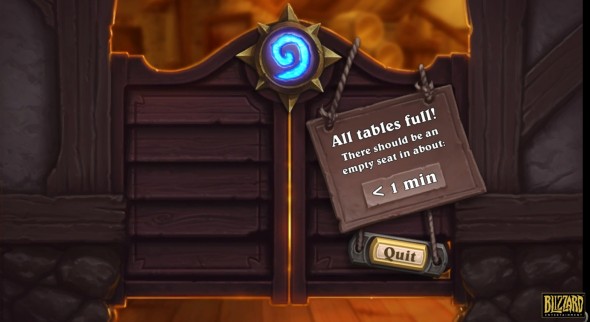
Well, mostly.
It has regulars
You’re likely to find a lot of the same people hanging out in the Third Place – it’s where everybody knows your name. Or your gamertag. (Mine’s DogtogBlade, btw.) The Third Place is for hanging out with old friends as well as making new ones; in Hearthstone you can request to add any other player to your friend list, and if you’re both online at the same time you can set up a game together. But the one you’re really there for is the Innkeeper – Harth himself. He’s always happy to see you, he finds you a seat, he commiserates with you about the weather: “Come in, and shut the door – it’s cold out there! Warm your frozen boots by the fire,” and so on. Since I’m playing this game in February – in Canada – Harth’s affable attestations seems particularly apt.
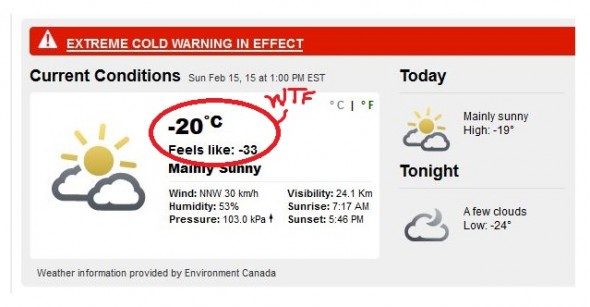
That translates to about twenty-seven degrees below zero…kelvin.
It’s unassuming
At the Third Place, the architecture isn’t extravagant and the decoration isn’t lavish. You don’t need to dress up all fancy and you’re not super worried about spilling something on the tablecloth. The tavern in Hearthstone is exactly this. Everything’s made of wood, the fireplace is simple but functional, you get the sense that the room is cozy but not cramped. It’s no more than it needs to be – but no less, either.
It’s chill
The atmosphere in the Third Place is relaxed, people are not stressed out because it’s a place you go to escape from stress. Not only are you not expected to be serious there, on the contrary – it’s more important to be funny and playful. And Hearthstone, of course, is a game, so playfulness is what it’s all about. It’s competitive play, though, which could risk contradicting one of the important factors that characterize a Third Place. Competitive play can obviously be stressful and maddening. Hearthstone combats this by making the game funny as hell. Some of the stuff that your minions say when they’re played or when they attack is really LOL-worthy, and the flavour text on the cards is positively hilarious. This successfully defuses the potential threat to Hearthstone being a chill environment.
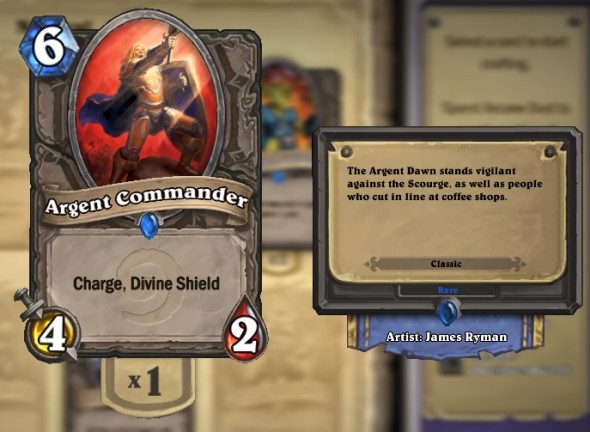
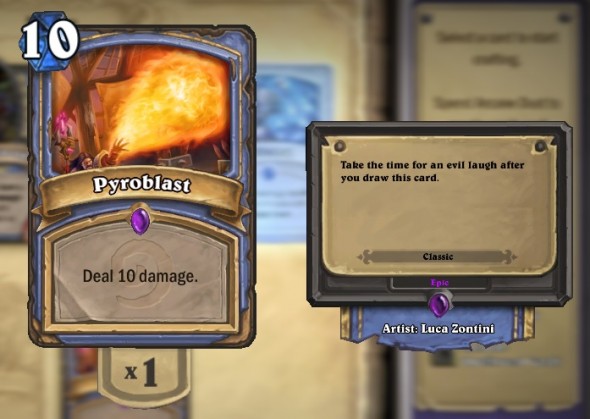
Socioeconomic status is irrelevant
A key component of the Third Place is that people from any and every class strata congregate there. There’s no cover charge or drink minimum, so you don’t need to be rich to get in, tables first-come first-served so you don’t have to be “important” to get a reservation. And, most importantly, you can be any gender, race, orientation, religion, political affiliation, age, or species. Hearthstone (unlike some games) is free to play – you don’t even need your own computer for it, you can go to the public library and play all day; and not only is it welcoming of anyone and everyone, but nobody even knows who you are on the other side of the gameboard. All you can learn about another player is their chosen name and their relative skill level. Nothing else.
It’s mostly for talking
This is where the parallel between Hearthstone and physical Third Places gets interestingly complicated: according to Oldenburg, the primary form of interaction at the Third Place is conversation. Other things can also be happening – like playing a board game, for instance – but mainly the people there will be talking to each other. Now, in Hearthstone, it is possible to communicate with the person you’re playing against, but what you can say is extremely limited. There are six “emotes” that a player can select, which are all slightly different depending on which hero you’ve chosen. The other player will hear whatever you say out of these choices, unless they “squelch” the other player’s emotes, which prevents them from appearing.
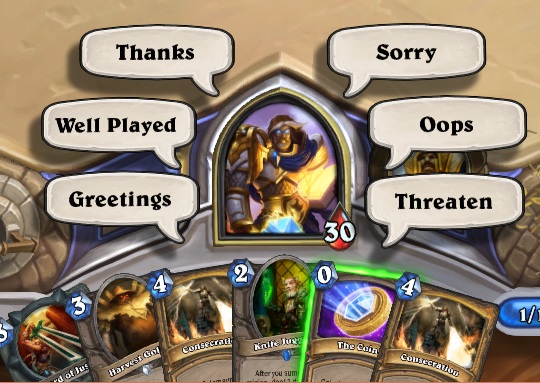
The enforced limits on what you’re able to communicate to your opponent in the game is a way to prevent the kind of harassment, profanity, general hate speech and other such nonsense that plagues games like WoW where you can say basically whatever you want in chat, and which turns a lot of more sensitive players off the whole idea of interacting with online communities at all. There’s a reason that “never read the comments” is such good advice.
But despite the fact that the capacity for conversation is extremely constrained, which might seem to make Hearthstone ineligible for true Third Place status, you can actually portray a lot of nuance even with only six phrases at your disposal. For instance, you can take the initiative to greet your opponent at the beginning of a match, or you can wait and see if your opponent greets you first. If you are greeted, you can choose whether or not to return the greeting. All of these options affect the tone of the game – whether it’s friendly or more confrontational, etc. If you strike a particularly devastating hit, you can apologize – and your opponent can accept your sentiment with his or her thanks, can riposte with a threat, or can ignore you altogether. Or if your opponent doesn’t say sorry, you can still say thanks – with sarcasm palpably dripping down the screen. When you’re down to one hit point and the end of the match is nigh, you can resign yourself to oblivion with an affable, “Well played,” which your opponent may return – or not. You can also swear an empty “I will destroy you!” as you, instead, are destroyed.
All in all, there is a much broader level of expression possible in Hearthstone than you might think, despite the built-in restrictions. So while “conversation” as such isn’t really possible, communication certainly can and does occur.
A home away from home
The Third Place isn’t home, but it’s like home in a few important ways. You feel that you belong there. You want to be there, and its other patrons want you there too. Going there is something you look forward to, something that feels refreshing and rewarding. It’s pleasant, intimate, and warm – like sitting with a friend by the hearth.
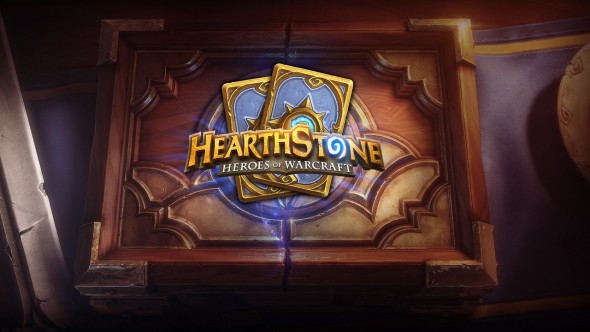
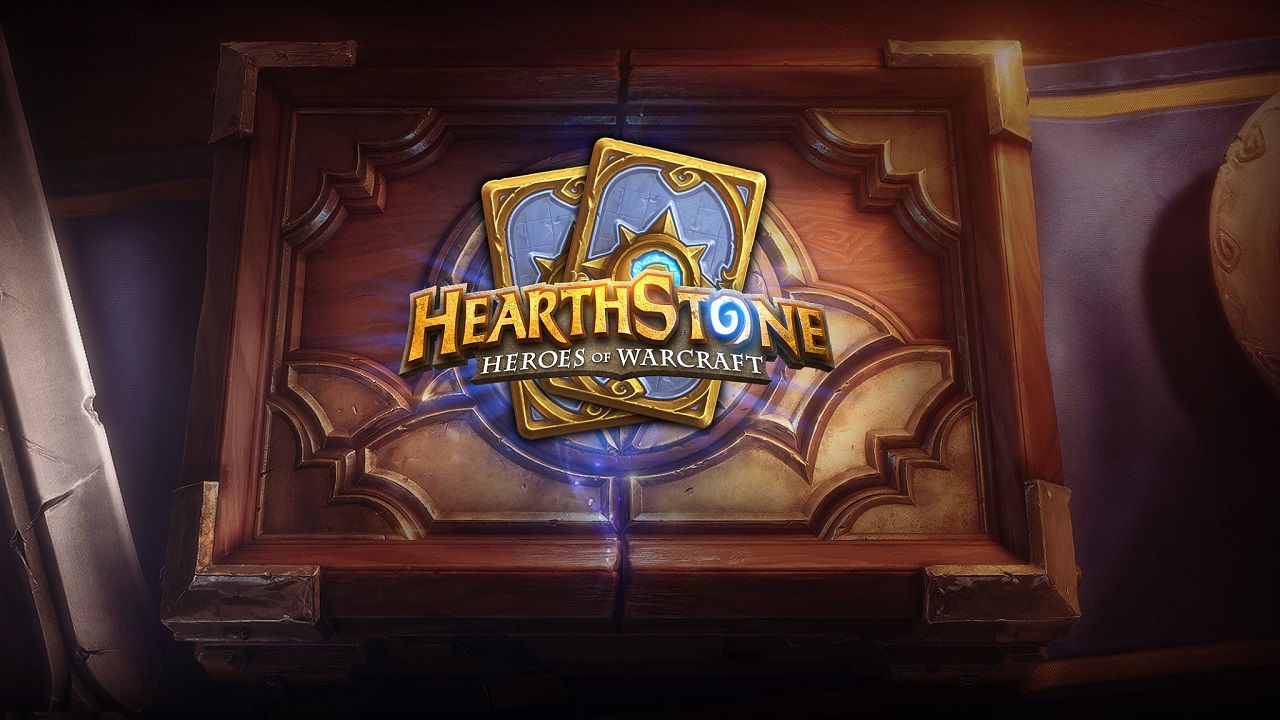
Love this article. Interestingly you brought up both the challenge of communication and the spectre of world of Warcraft. I agree that the limited communication available in the game, although a credit to the game, definitely challenge the “third space” argument.
Interestingly, there is another method of communication available in Hearthstone, via messsages and chat with your friends list. So, although you can’t necessarily “converse” with your opponent, you are afforded the ability to converse with anyone on your Blizzard Friends list, which encompasses all of Blizzard’s Battle.net games (most notably, WoW).
For many gamers, if WoW wasn’t a third space, it was close, the presence of a “guild” and the guild chat that came with it. It’s not an uncommon experience that friendships and relationships were formed out of this space. (And it’s probably true that other similar Blizzard games likely fostered friendships as well). Point being, you can tap in to this environment of friends, and converse with them in that manner.
To follow the metaphor of the pub, it’s that you would converse with people whom you are familiar, or friends with, but merely nod, smile at or give other subtle communications to strangers. The only piece of disorientation is that you’re sitting across the “table” from the stranger and your friends could be “physically” located in an entirely different “space.” (This is complicated and weird.)
One thing worth noting, however, is that those interactions are limited to one on one, there is no “group” conversation in hearthstone. Still, it’s an area for explanation.
Great article
It’s pretty sad to see people worshipping a game that is extremely limited and dull. It’s a reskin of MTG with the dumbing down mechanics that has become standardized in the current gaming industry much like WoW. It’s a shame that a game so bad gets so many rewards. The game reviews and critics are becoming more and more like movie reviews and critics where they throw tons of meaningless titles and awards on games to try and make it sell more. This is nonsense and needs to stop. Sadly the only way it’s gonna stop is when the industry crashes and so it should if we are ever to get any decent games anymore.